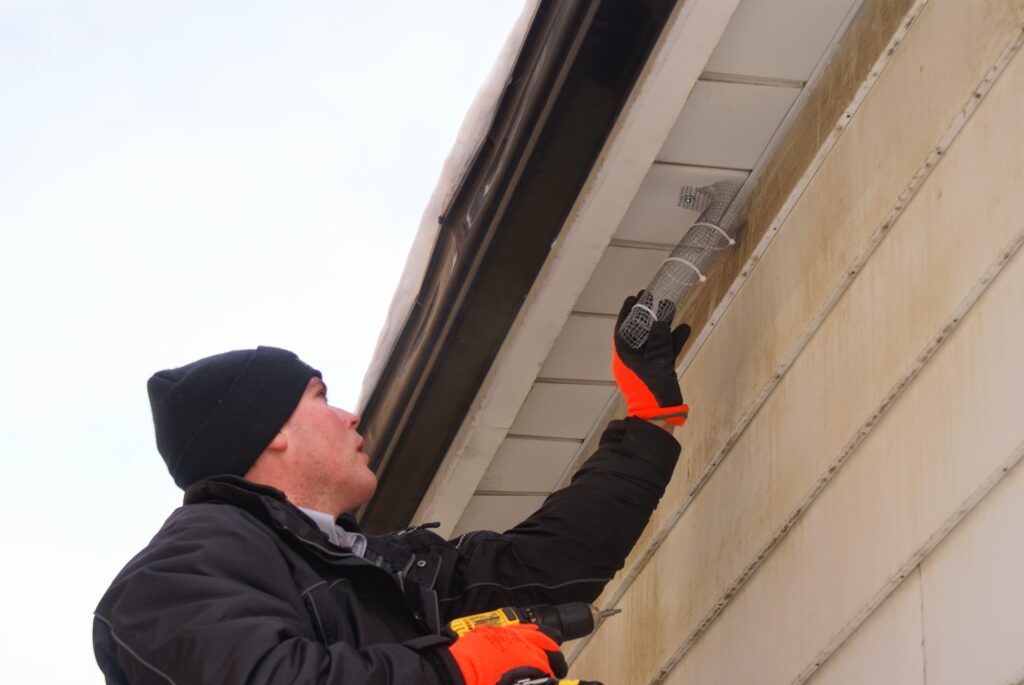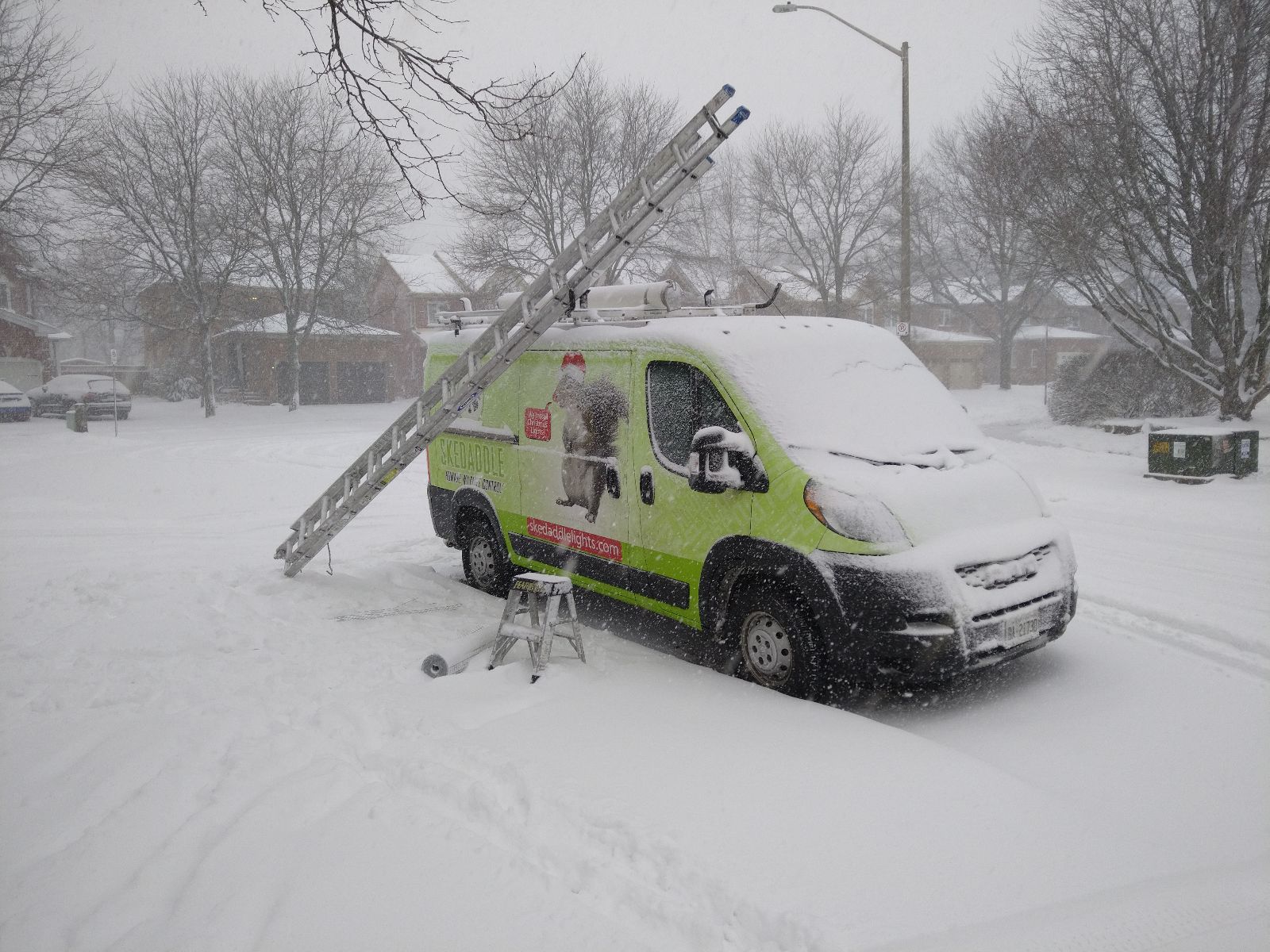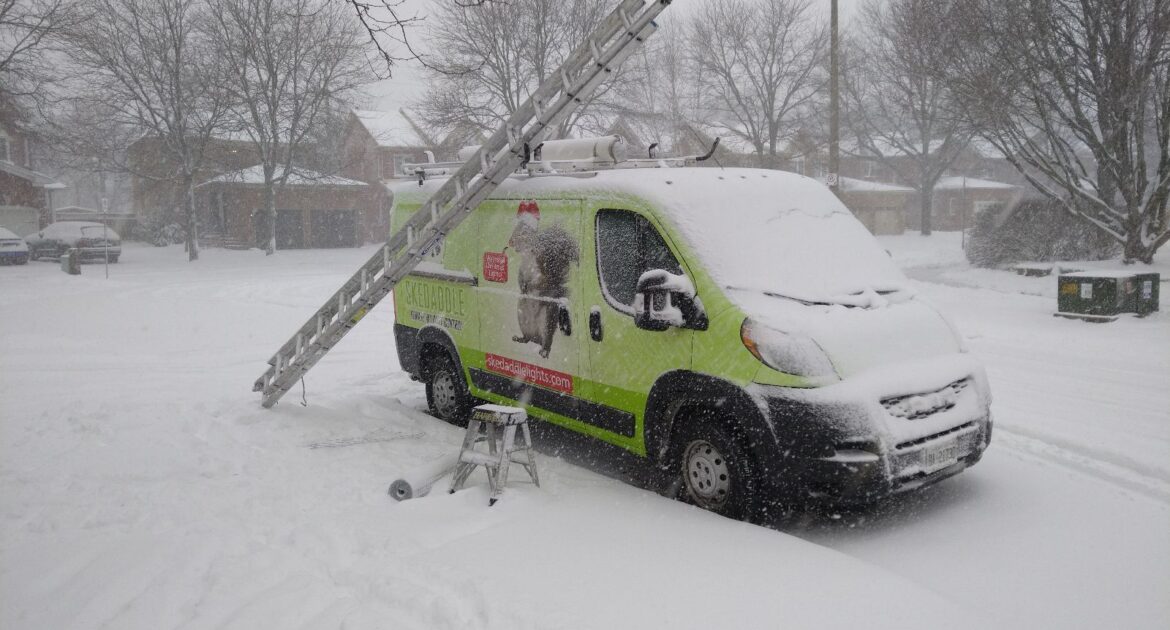Many people stop worrying about how to get rid of raccoons and other wildlife in the winter because they assume all the critters settle into their nests and dens. Most animals do not hibernate in the winter, meaning they are still active and searching for food and shelter, making continued home inspections necessary.
When winters are warmer, many animals remain motivated to find interior structures for shelter. Your home’s attic is a fine hotel for determined wildlife.
Why Inspections Matter in the Winter
Some people wonder, “are raccoons nocturnal?” The question implies that the animal’s behaviour can somehow make it harder to manage. While raccoons are nocturnal, it is still possible to use preventative techniques to protect your property. Also, it is possible to determine if you have a raccoon problem by inspecting your property.
Raccoons and all wildlife leave clues about their nesting sites and feeding grounds. You can find tracks, evidence of latrines, or notice property damage that all points to a wildlife problem.
How To Identify Tracks and Droppings
When searching your property for signs of wildlife, you’ll want to look for tracks and droppings. All animals have slight differences in their paws and scat. While there are too many species to list them all in a short article, the most common neighbourhood animals are rats, mice, squirrels, and raccoons.
Rats and Mice Tracks and Droppings
Rats and mice have tiny feet. Their front feet only have four toes and are about half an inch long. The back feet have five toes and can be up to one inch long. A rat’s back feet will be larger than a mouse, and its three middle toes are grouped and pointing straight.
The primary difference between mouse and rat droppings is the size. Mice will have droppings of about a quarter of an inch or less. Rat droppings are smooth and shiny black. Mouse droppings are small and smooth with pointed ends.
Squirrel Tracks and Droppings
Because squirrels tend to hop around, their tracks usually meander. Still, the hopping motion means their tracks often end up side-by-side. You will find groupings of four prints, possibly slightly misaligned but in a row.
Squirrel droppings look similar to rat droppings but larger. They are also more oblong or oval-shaped than other rodents.
Raccoon Tracks and Droppings
Raccoons have cute and interesting tracks because their front paws look so similar to a human hand. They, too, have five fingers that separate outward from the palm. Their hind paws are similar, but the heel is more prolonged and slightly bent.
Raccoon droppings of scat are cylindrical with broken or rounded ends. While typically darker, the colour varies based on the animal’s diet.
Look for tracks around your house’s foundation. Also, after a fresh snowfall, look along your roofline. If you find tracks in these areas, contact a wildlife control service.

What To Look for During a Routine Exterior Inspection
Besides looking for tracks and droppings around your home, you want to look for evidence of damage. For example, inspect the roofline for holes or vent damage, look at the foundation for signs of cracks, or check crawlspace entrances and siding for chew marks. You’ll also want to look for deteriorating fascia boards, peeling siding, or holes in the roof or attic vents, all of which can attract rodents and other animals, motivating them to chew and get inside.
Why You Should Hire Wildlife Removal in Barrie
Did you find animal tracks or droppings around your home, or have you noticed new damage to your roof or siding? Contact Skedaddle Humane Wildlife Control and schedule a property assessment.




